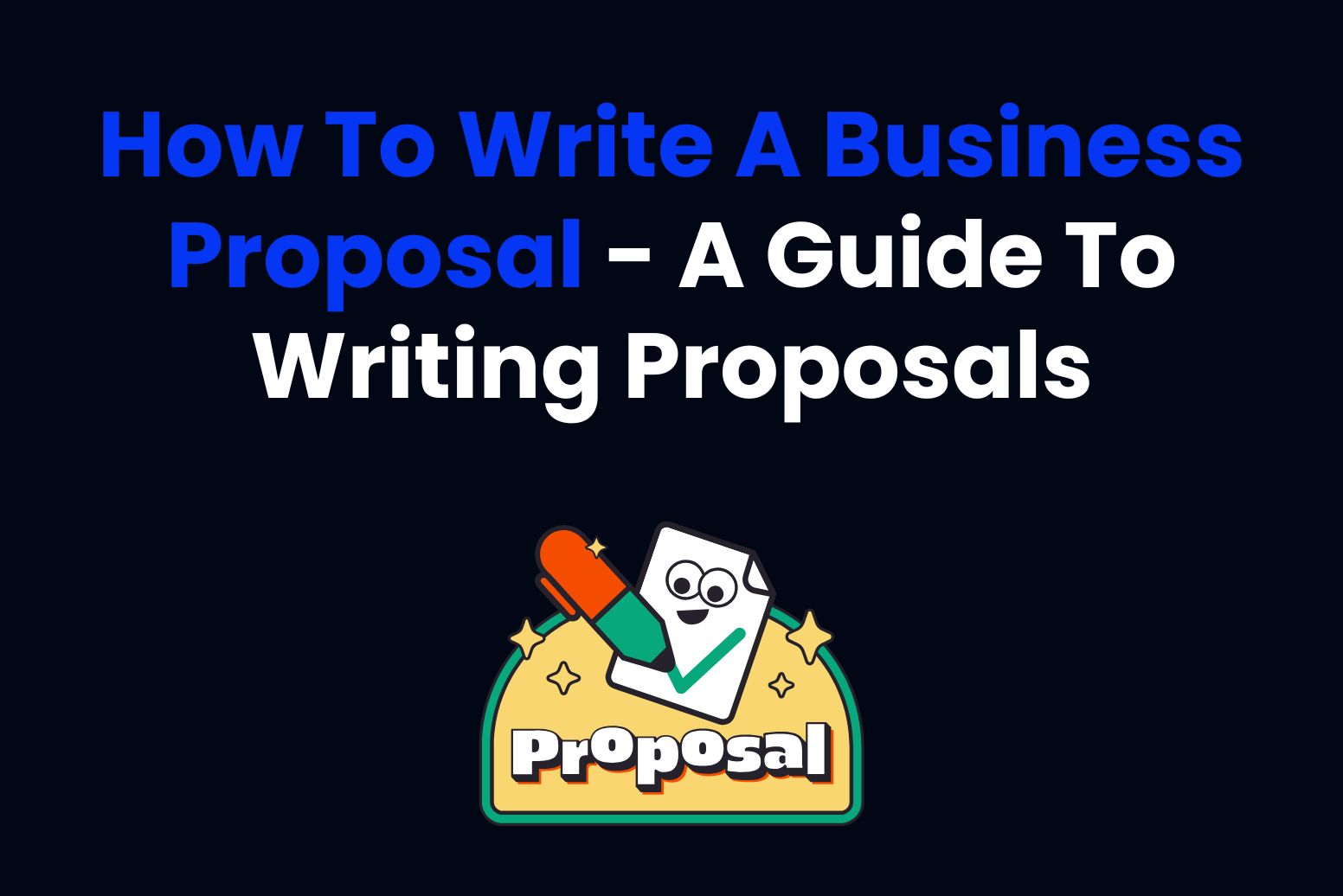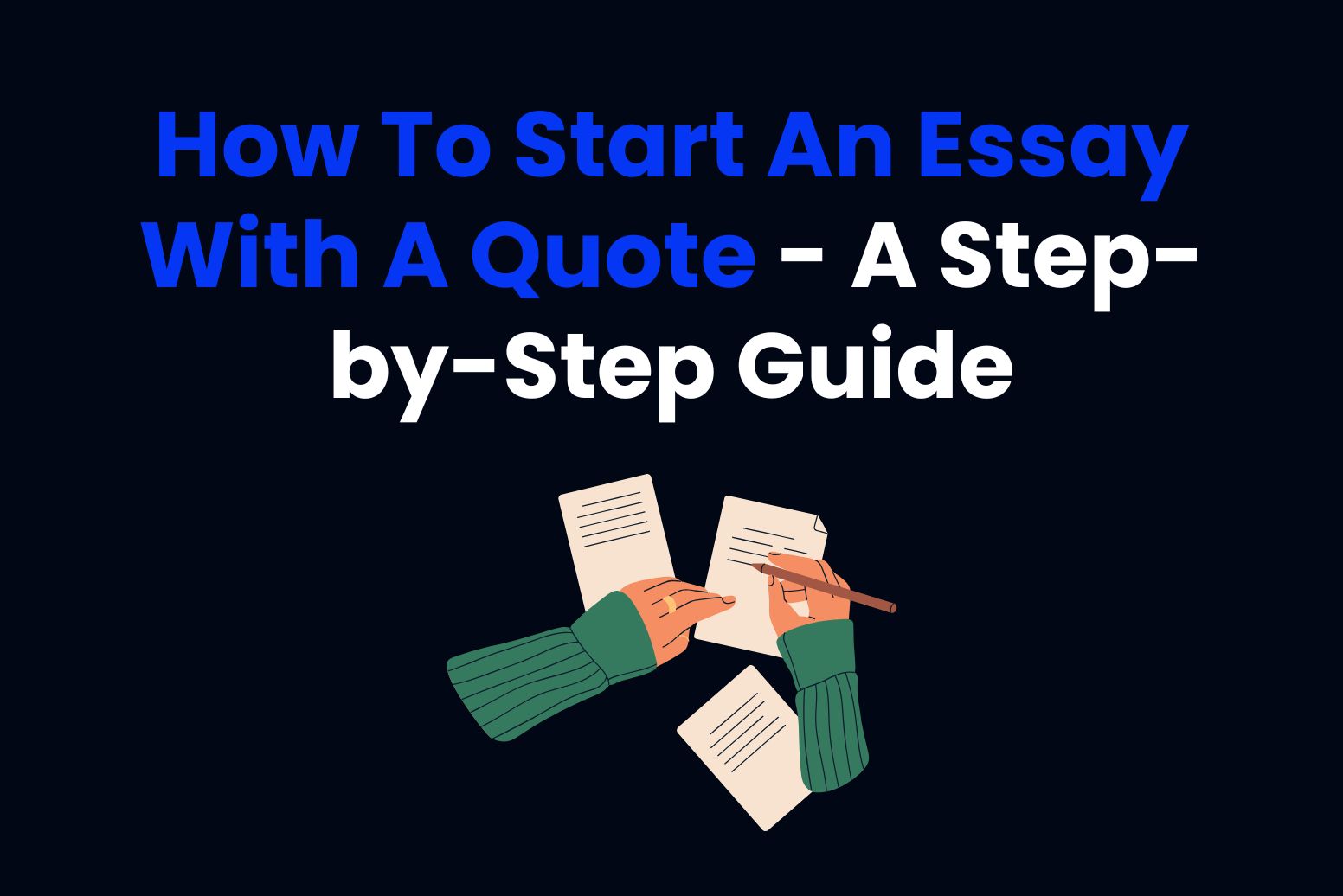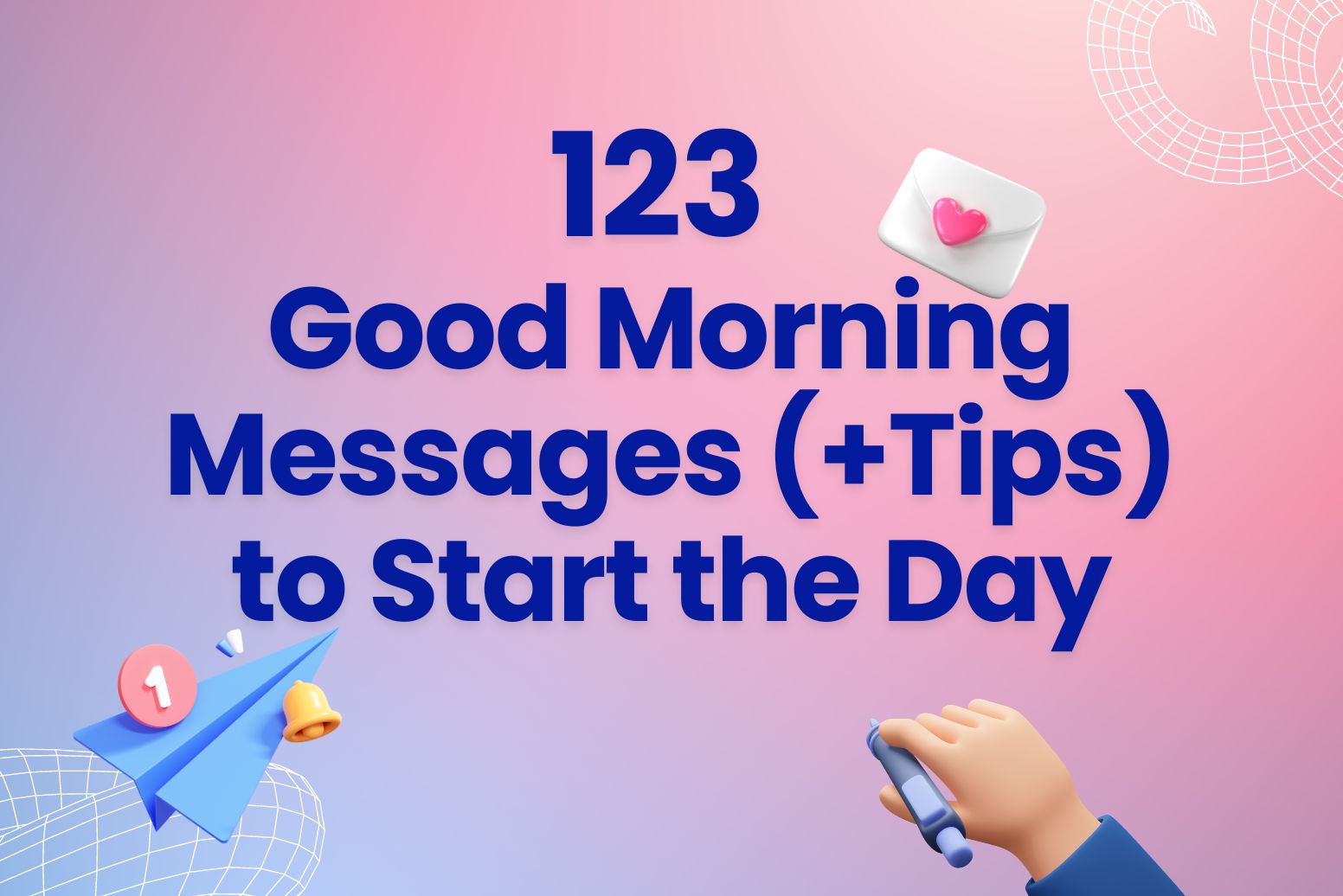Did you know that 68% of businesses lose deals due to poorly crafted proposals? That’s right; your proposal can be the difference between landing your dream client or losing out to the competition. So, you must know how to write a business proposal that wins clients over.
A good business proposal is your chance to stand out, solve problems, and prove why you’re the perfect fit. In this guide, we’ll walk you through how to write a business proposal step by step. By the end, you’ll know exactly what to include, how to structure it, and what to avoid. So, let’s dig right into the topic!

What Is A Business Proposal?
Before we get into how to write a business proposal, let’s talk about what a business proposal actually is. A business proposal is a formal document you send to potential clients to showcase your ideas, solutions, or services. Its main purpose is to convince them to say, “Yes, let’s do this!”
You can think of it as a tailored sales pitch. Unlike generic marketing materials, a business proposal addresses a specific problem your client has and explains how you can solve it. It’s personalized, persuasive, and packed with value.
What Differentiates A Business Proposal From A Business Plan?
Although the terms are sometimes used interchangeably, a business proposal and a business plan are completely different tools. Each has its own purpose and audience, so let’s see a quick difference between both before we dive deep into how to write a business proposal.
Business Proposal
Here are a few key characteristics of a business proposal:
- Purpose: A business proposal is aimed at securing a specific client or project. It’s a persuasive document that shows how your product or service can solve the client’s problem.
- Audience: A business proposal is typically sent to potential clients, stakeholders, or partners.
- Focus: It focuses on specific solutions, deliverables, and benefits tailored to your client’s needs.
- Structure: It includes sections like an executive summary, problem statement, proposed solution, pricing, and deliverables.
- Tone: The tone of a business proposal is usually client-focused and persuasive.
Business Plan
Here are a few key characteristics of a business plan:
- Purpose: A business plan serves as a roadmap for your business. It outlines your goals, strategies, and financial projections.
- Audience: Business plans are used for internal planning or to secure funding from investors, banks, or stakeholders.
- Focus: Your company’s overall vision, business model, and long-term growth strategy is the focus of a business plan.
- Structure: It covers sections like market analysis, organizational structure, financial projections, and product/service descriptions.
- Tone: The tone of a business plan should be kept informative and strategic.
Key Difference
In simple terms, a business plan explains where your business is going and how you’ll get there. On the other hand, a business proposal explains what you can do for a specific client right now.

Why You Should Learn How To Write A Business Proposal
Crafting a well-thought-out business proposal isn’t just a formality; it’s a crucial step in building professional relationships and securing deals. Here’s why you should know how to write a business proposal:
Builds Trust
A professional, detailed business proposal demonstrates to potential clients that you’ve taken the time to understand their needs and challenges. It also shows you are serious about the partnership.
Highlights Your Value
A business proposal isn’t just a pitch; it’s an opportunity to clearly communicate how your products or services solve the client’s problems. Instead of focusing solely on features, you frame your offerings as the perfect solution to their pain points. Clients don’t just want to know what you do but they want to know how it will make their lives easier or their business more successful.
Increases Your Chances Of Success
In competitive industries, a strong business proposal can be the difference between winning and losing a client. Clients often receive multiple proposals, especially for high-value projects. A proposal that is visually appealing, easy to read, and directly addresses their concerns is far more likely to leave a lasting impression. Or else your proposal will be lost in the sea of average proposals.
Types Of Business Proposals
Now that you know how important it is to learn how to write a business proposal, let’s talk about its types. There are two different types of business proposals commonly being used. Both have their place, but each requires a slightly different approach. Let’s talk about each of these in detail:
Solicited Proposals
A solicited proposal happens when a potential client or organization asks for a proposal. This often comes in the form of a Request for Proposal (RFP). An RFP is essentially a formal invitation to submit a proposal for a specific project or service.
RFP Process:
- The client will detail their needs, requirements, budget, timeline, and other criteria in the RFP.
- They may send it to multiple vendors or service providers, and your job is to respond with a proposal that shows you’re the best fit for the job.
Key Focus:
You should tailor your proposal to meet the exact needs and specifications outlined in the RFP. This means addressing the client’s pain points, providing a clear and realistic solution, and differentiating yourself from other applicants.
Example:
Let’s say a company that needs AI business ideas. You respond by proposing a comprehensive strategy with specific tactics, timelines, and cost estimates that directly meet the client’s goals.
Unsolicited Proposals
An unsolicited proposal, on the other hand, is one you send without being asked. It’s a proactive way to pitch your services or solutions to a business that may not have considered you yet. You’re essentially making the first move, and it’s not as uncommon as you think it is.
Why Send Unsolicited Proposals?
- You might identify a potential client who could benefit from your services but who hasn’t issued an RFP.
- Maybe they haven’t even thought about the problem you can solve for them, and this is your chance to highlight your solution.
- Unsolicited proposals are about spotting opportunities and presenting your business as the answer to their needs.
Key Focus:
- The challenge with unsolicited proposals is that you’re “cold-pitching,” so it’s essential to grab their attention quickly. Your proposal needs to be more persuasive, showing the value of your solution and why they need it, even if they haven’t thought about it yet.
- Highlight how your services will solve a specific problem, improve their operations, or increase their profits.
Example:
You notice a local restaurant struggling with online visibility. You send them an unsolicited proposal offering a tailored digital marketing plan that will increase their web traffic and attract more customers.

Step-By-Step How To Write A Business Proposal
Now that you understand the importance of a well-structured business proposal, it’s time to dive into the key components that will make yours stand out. From introducing your company to presenting your pricing, each section plays a crucial role in guiding the client through the proposal. Let’s take a closer look at each step of how to write a business proposal if you need to follow to create a proposal that gets noticed:
Step 1: Cover Page
The cover page is your proposal’s first impression, so make it count. It’s like the front cover of a book that gives a sneak peek into what’s inside. Here’s what you should include on the cover page of your business proposal:
- Your business name and logo: This helps the client recognize who the proposal is from.
- The client’s name: Personalizing it makes the proposal feel more tailored to them.
- The title of the proposal: Make sure the title of your business proposal is clear and direct. For example, “Proposal for Digital Marketing Services.”
- The date: Adding a date on the cover photo ensures your client knows when the proposal was submitted.
Step 2: Executive Summary
This section is your chance to grab the client’s attention. It’s a quick, engaging overview of what’s to come. Think of it as a movie trailer that gets the client excited to read more. Here’s what to include:
- The client’s problem: Briefly describe what issues they’re facing.
- Your proposed solution: Give them a taste of how you can solve their problem.
- Why you’re the best choice: Mention what makes your solution stand out from the competition.
Make it short and sweet, just enough to entice the client to read the full proposal.
Step 3: Problem Statement
This is where you show the client that you truly understand their struggles. Empathy goes a long way here. Explain:
- What their challenges are: Dive into the specific pain points the client is facing.
- Why these challenges matter: Show them the consequences of not solving these problems.
For example, “We understand that balancing rapid growth while maintaining customer satisfaction can lead to burnout and inefficiency.” This is a good example of a well-written problem statement.
Step 4: Proposed Solution
Now, it’s time for your business proposal to shine. Here, you explain exactly how you plan to solve the client’s problem. Make it clear and straightforward:
- Be specific about your approach: Whether it’s a new system, service, or strategy, outline exactly how you’ll address their pain points.
- Tie it directly to their needs: Connect your solution to the problems you highlighted earlier. Try to make it clear that your approach is custom-fit for their situation.
For example: “Our custom business name generator will help your team provide personalized service while saving time.”

Step 5: Deliverables
Your clients want to know exactly what they’ll get. Be specific about the tangible items or services you’ll provide, and break them down in a way that’s easy to understand. You could list things like:
- Weekly progress reports
- A fully customized website
- Post-launch support for 3 months
This gives your clients a clear picture of what they can expect from you.
Step 6: Pricing And Budget
Transparency here is the key. Clients want to know what the project will cost, so be clear and upfront with your pricing. Consider providing different pricing options if you offer tiered packages. This lets your client choose based on their budget and needs. Here’s an example of how to make different packages for your services:
- Basic Package: $5,000 (covers a simple website redesign)
- Premium Package: $10,000 (includes additional features like SEO optimization and 6 months of support)
Disclaimer: These packages are just for the purpose of giving you an idea. You can definitely charge more or less than this, depending on your experience and expertise.
Step 7: About Your Company
The “About Us” section is where you can brag a little, but with good reason! Show your client why you’re the right fit for the job. Here’s what you should include in this section:
- Your experience: Highlight your team’s skills and the experience that makes you stand out from the crowd of options available in the market.
- Your expertise: Showcase your knowledge in the field to build your client’s trust.
- Past success stories: Use case studies and testimonials to back up your claims and demonstrate your capability.
The goal is to show them why they should choose you over anyone else.
Step 8: Terms And Conditions
This section ensures there are no surprises down the road. Lay out the basics of your working relationship:
- Payment terms: When and how you expect to be paid.
- Deadlines: Clear timelines for deliverables.
- Cancellation policies: What happens if the client needs to cancel or delay the project?
This helps protect both you and your client.
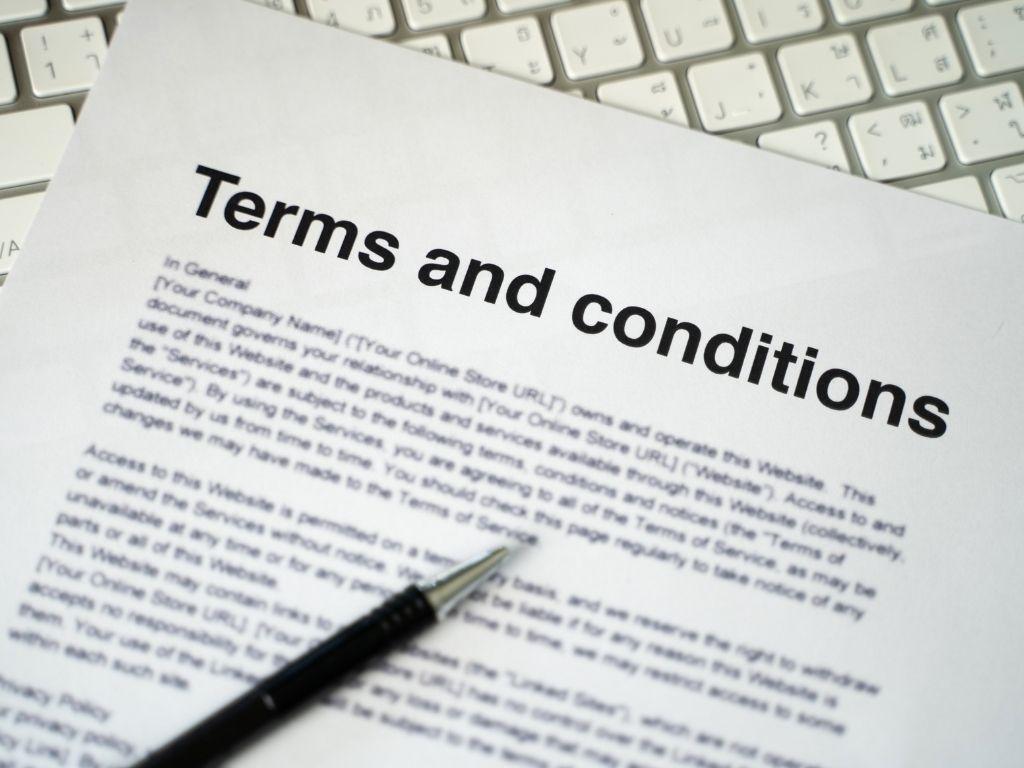
Step 9: Call To Action (CTA)
End your proposal with a clear action for the client to take. You want them to feel like the next step is easy and natural:
- “Schedule a call with us to discuss your project further.”
- “Sign and return the attached agreement to get started.”
A good CTA encourages your client to take immediate action and move things forward.
Tips On How To Write A Business Proposal
Creating a strong business proposal isn’t just about the structure. It’s also about how you communicate your ideas. Follow these tips to make your proposal stand out:
Customize For Your Audience
No two clients are the same, and your proposal shouldn’t be either. Personalizing your proposal shows the client that you understand their unique needs and challenges. Never copy and paste the same proposal for multiple clients because it won’t even land you a single project. Here’s how you can customize your business proposal according to your target audience:
Research The Client:
Before you start writing, dig deep into the client’s industry, company, and goals. Understand their pain points and priorities because when you hit those pain points in your proposals, you’ll have guaranteed clients.
Address Specific Challenges:
Use examples or language that directly applies to their business. For instance, instead of saying, “We’ll help you increase revenue,” try, “We’ll help your e-commerce store boost sales by optimizing your abandoned cart process.”
Use Their Name And Details:
Replace generic terms like “the client” with their company name or key stakeholder names to make the proposal feel more personal. Who doesn’t like being called by their name?
Keep It Simple
Complicated language can confuse your clients or, worse, drive them away. Clarity is key when writing a proposal that wins. Here’s how to write a business proposal that is simple yet hits the spot:
Avoid Jargon:
Stick to straightforward terms. If you must use technical terms, explain them in plain language.
Be Concise:
Long-winded sentences or paragraphs can lose the reader’s interest. Break down information into bite-sized chunks or bullet points.
Use Visuals:
Charts, graphs, and images can simplify complex ideas and make your proposal more engaging. For example, you can use a bar chart to show how your solution could save the client time or money. Plus, adding visuals will be easier on the eyes of your reader.
Proofread Like a Pro
Even the best ideas can be overshadowed by typos or grammatical errors. Flawless writing shows professionalism and attention to detail.
Use Proofreading Tools:
Tools like Grammarly or Arvin AI’s Grammar Checker can catch mistakes and improve readability.
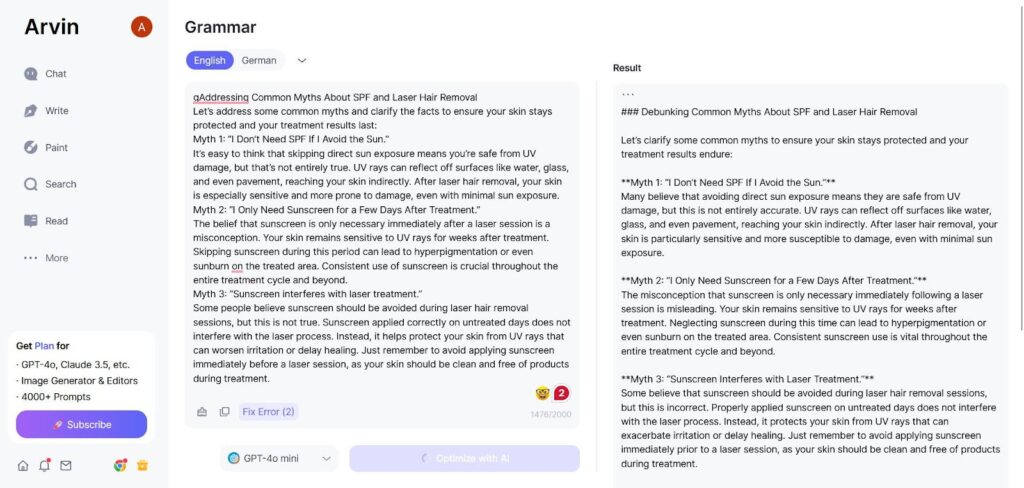
Read It Aloud:
Reading your proposal out loud can help you catch awkward phrasing or missing words.
Get A Second Opinion:
Ask a colleague or friend to review your proposal. A fresh pair of eyes can spot mistakes you might miss. Plus, it’s always a good idea to get a second opinion!
Double-Check Formatting:
Consistent fonts, spacing, and section headers make your proposal look polished and professional. It gives the same impression as good handwriting did in your exams!
Focus On Benefits, Not Features
Clients care more about how your solution helps them than about the technical details. Shift your focus from what you offer to the results you deliver.
Highlight Client Outcomes:
Instead of saying, “We offer 24/7 support,” say, “Our 24/7 support ensures your operations never face downtime.”
Use Measurable Results:
Include specific data or case studies that demonstrate your past successes. For instance, “We helped a similar company increase their web traffic by 120% in six months.”
Show Your Credibility
Clients want to work with someone they can trust. Build their confidence in your abilities with proof of your expertise. Here are easy ways to win your client’s trust:
Add Testimonials:
Include a section with client quotes or reviews to show how you’ve helped others.
Include Certifications Or Awards:
If applicable, mention industry certifications, awards, or recognitions.
Showcase Relevant Experience:
Share a case study or example that aligns with the client’s industry or problem.

Common Mistakes To Avoid
Even the most well-intentioned business proposals can miss the mark if certain pitfalls aren’t avoided. Here are some common mistakes to steer clear of, along with tips to help you get it right:
Writing A One-Size-Fits-All Proposal
Clients can spot a generic proposal from a mile away, and it’s not a good look. Using the same template for every client without personalization signals a lack of effort and understanding of their unique needs.
Tailor each proposal to the client’s business, goals, and challenges. Mention specific details about their company to show that you’ve done your homework. For example, if the client is a small retail store, your solutions should address their unique concerns rather than those of a large corporation.
Overloading With Unnecessary Information
While it’s tempting to include every detail about your company and services, too much information can overwhelm the client. This can make your proposal hard to digest, and you don’t want that. Clients don’t have the time (or patience) to sift through pages of irrelevant details. They’re looking for concise solutions to their problems, not an autobiography of your business.
Stick to what’s relevant. Highlight the key points that directly address the client’s needs and save additional information (like technical specs or detailed case studies) for an appendix. Keep your writing clear and concise, and use bullet points or visuals to present complex ideas.
Forgetting to Follow Up After Sending the Proposal
A well-crafted proposal can lose its impact if you don’t follow up. Many clients review proposals but get busy or distracted, so it’s important to remind them about your pitch. A lack of follow-up can make the client think you’re not invested in winning their business, or they might forget about your proposal entirely.
After sending the proposal, send a polite follow-up email within a few days. For example, you might write:
“Hi Marie, I hope you’ve had a chance to review the proposal I sent on 24th December. I’d love to answer any questions or discuss the next steps. Let me know how I can assist!”
If you still don’t hear back, try a second follow-up in a week or so. Just remember to stay professional and avoid coming across as pushy.
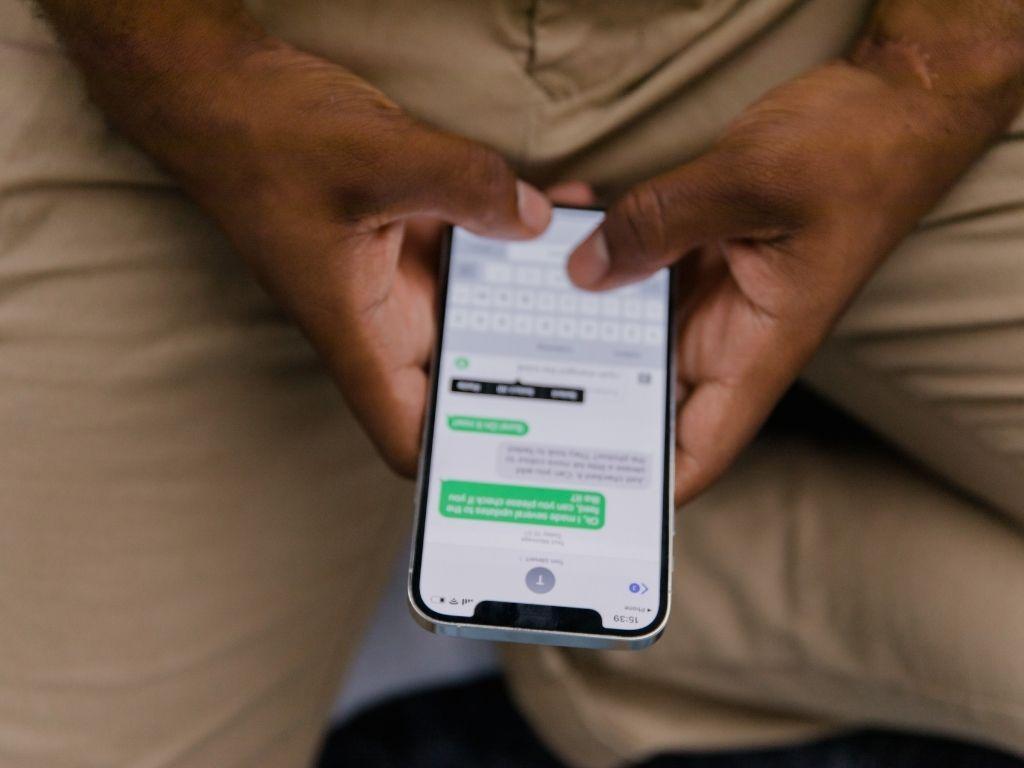
Focusing Too Much on Yourself Instead of the Client
We understand that it’s important to highlight your qualifications. However, focusing solely on your company’s achievements can make your proposal feel self-centered. Clients care more about how you can solve their problems than about your accolades or awards.
Shift the focus to the client’s needs. Instead of saying, “We’re the best at XYZ,” emphasize, “Here’s how we can help you achieve XYZ.” Balance showcasing your expertise with demonstrating how it benefits your client.
FAQS About How To Write A Business Proposal
Here are a few of the most frequently asked questions about how to write a business proposal:
How do I write the title of a business proposal?
The title of a business proposal should be clear, concise, and specific to the client and project. Aim for something that immediately communicates the purpose of the proposal while grabbing attention. For example, include the client’s name or project details to personalize it, such as “Marketing Strategy Proposal for CPEX” or “Website Redesign Proposal for SpeedAF.” Avoid generic titles like “Business Proposal” as they lack impact. Adding a touch of creativity or professionalism in the title can also make your proposal stand out and convey that you’ve tailored it specifically for the client.
How long should a business proposal be?
There’s no one-size-fits-all answer, but a business proposal should be as long as it needs to be to clearly communicate your ideas without overwhelming the client.
- Short proposals (2-5 pages): Ideal for small projects or straightforward offers.
- Long proposals (10+ pages): Better suited for complex, high-value projects with more details, such as technical specifications or case studies.
The key is clarity and relevance, so avoid adding unnecessary information just to make it longer.
What is the proper format for a business proposal?
A business proposal typically includes: An introduction, an executive summary, a problem statement, proposed solutions, the methodology or approach, timeline, cost breakdown, and a conclusion. You should also include any necessary appendices with some additional details.
How do I make my proposal stand out from competitors?
To stand out, focus on personalization, clarity, and creativity.
- Personalization: Reference specific details about the client’s business and goals.
- Clarity: Use simple language, break down complex ideas, and organize your content into sections with clear headings.
- Creativity: Add visuals like charts, graphs, or infographics to make your proposal visually engaging.
Additionally, consider offering a unique value proposition, such as a free consultation or a trial period for your services.
Take Home Message
Writing a business proposal doesn’t have to be complicated. By following this guide on how to write a business proposal, you can craft a compelling document that highlights your value, addresses your client’s needs, and helps you win more deals.If you’re ready to take your proposals to the next level, why not save time and effort with Arvin AI? This AI-powered writing tool can help you craft polished, professional, and persuasive proposals in no time. So, what are you waiting for? Start crafting proposals that close deals and impress clients today!

